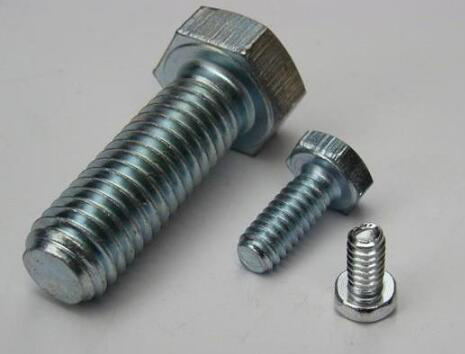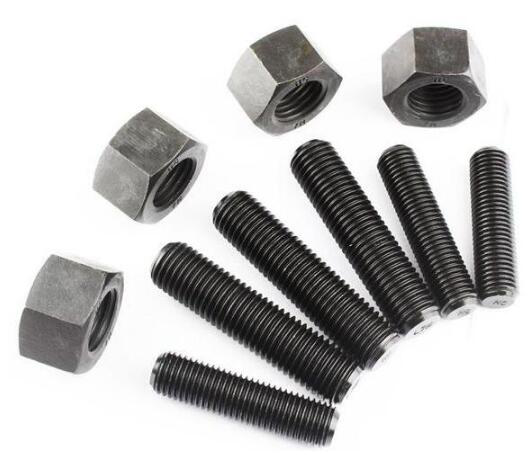Aug. 17, 2018
"Screws" are just a general term for fasteners. They are everyday words. They include: bolts, screws, nuts. As long as there are threaded fasteners, screws, nuts, bolts, and screws all have one thing in common, that is, they have threads. In addition to the thread, what are the other differences? The following i will introduce the difference between bolts, screws and studs. How to distinguish the screw fasteners? Let's understand it!

1. Bolt: Mechanical parts, cylindrical threaded fasteners with nuts. A type of fastener consisting of a head and a screw (a cylinder with an external thread) is required to be fitted with a nut for fastening the two parts with through holes. This type of connection is called a bolted connection. If the nut is unscrewed from the bolt, it is possible to separate the two parts, so the bolt connection is a detachable connection.

2. Stud: A type of fastener that has no head and only has threads on both ends. When connecting, one end must be screwed into the part with the internally threaded hole, the other end is passed through the part with the through hole, and then the nut is screwed, even if the two parts are fastened together as a whole. This type of connection is called a stud connection and is also a detachable connection. It is mainly used for the case where one of the connected parts has a large thickness, requires a compact structure, or is not suitable for bolting due to frequent dis-assembly.
3. Screw: It is also a kind of fastener consisting of two parts, head and screw. It can be divided into three categories according to the purpose: machine screw, set screw and special purpose screw. The machine screw is mainly used for a tightly threaded part and a tight connection between a part with a through hole and does not require a nut fit (this type of connection is called a screw connection and is also a detachable connection; Fitted with a nut for a secure connection between two parts with through holes.) The set screw is primarily used to secure the relative position between the two parts. Special purpose screws such as eyebolts are used for lifting parts.
Classification use
1. bm=1d studs are generally used for the connection between two steel connectors; bm=1.25d and bm=1.5d double-end studs are generally used for cast iron joints connected to steel. The connection between the pieces; the bm=2d double-end stud is generally used for the connection between the aluminum alloy connected piece and the steel connected piece. The former connector has an internally threaded bore and the latter connector has a through bore.
2. Both ends of the double-headed studs must be matched with nuts and washers for the two connected parts with through holes.
One end of the welding stud is welded to the surface of the connected piece, and the other end (threaded end) passes through the connected piece with the through hole, then the washer is put on, and the nut is screwed to connect the two connected parts into one piece.
Previous Which Processes Can Replace Hard Chrome Plating
Next None
Pulished on Apr. 22, 2019
Common mistakes in fasteners choosing,how many items do point you?
Pulished on Nov. 08, 2018
NAVIGATION
+86 755 8425 3369
+86 755 8467 6507
Building14,BeiguangIndustrialPark,No.269Liangbai Road,E-gonglingVillage,PinghuTown,Longgang District,Shenzhen,GuangdongProvince,Chin-518111
FOLLOW US
Copyright © Shenzhen Manjun Precision Technology Co.,Ltd.
All Rights Reserved | Sitemap Technical Support: 